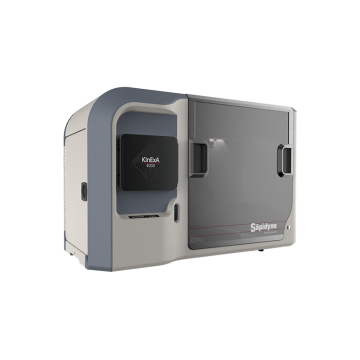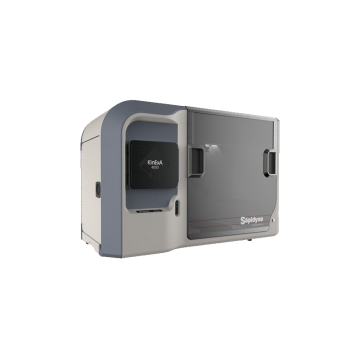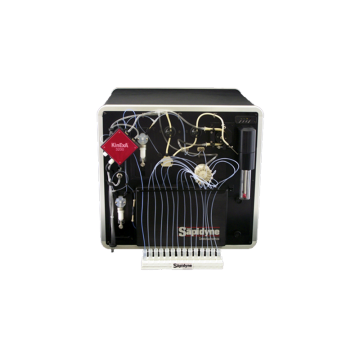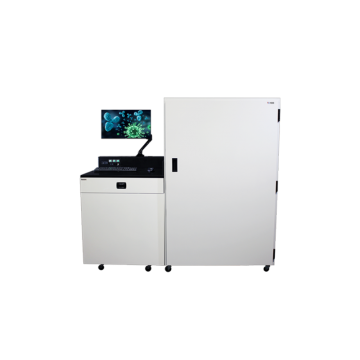Product Page
Tight Binding Characterization
- Availability: Pre-Order
Kinetics, affinity, and concentration analysis in one system.
KinExA is a highly sensitive affinity and kinetics characterization of antibodies, cells (native and engineered), small molecules, molecules in unpurified samples, and unmodified molecules in solution.
The determination of binding kinetics and affinity plays a critical role in selecting candidates for therapeutics development. KinExA 4000 measurements require low sample volumes and are performed in physiologically relevant conditions. KinExA has the ability to measure high affinity interactions, allowing users to accurately measure their strongest candidates.
When a receptor and ligand reach equilibrium in solution three species are present, the receptor, the ligand and the receptor-ligand complex. A Kinetic Exclusion Assay (KinExA®) measures the free concentration of either the receptor or the ligand without perturbing the equilibrium.
(Note: In the following description the format of the assay is to immobilize the ligand to measure free receptor in the sample. Conversely the receptor may be immobilized to measure free ligand in the sample, depending on the materials used.)
Measurement of the free receptor is accomplished by briefly exposing the sample mixture to a solid phase on which the ligand is immobilized. The exposure time is critical because keeping the interaction time of the sample to the solid phase quite short results in a situation where the only significant binding to the solid phase is from the free receptor. The Kinetic Exclusion Assay is in contrast to a competition assay in which the equilibrated solution is in contact with the solid phase long enough for the solid phase ligand to compete for the solution receptor.
The advantage of KinExA is that the signal from the captured receptor represents only the concentration that is free in the solution. Knowing the equilibrium concentration of receptor allows determination of the binding constants as described on the Reversible Binding page.
The commercially available instruments for performing KinExA assays (Sapidyne's KinExA 4000, 3200 and 3100) use a small column of particles through which the sample and other reagents are passed. The contact time of any portion of the sample with the solid phase is then the transit time through the column and can be controlled by the flow rate chosen (from around 50 milliseconds to about a second).
Systems with nM range binders or tighter will be in the kinetic exclusion assay mode (KinExA mode). Weaker binders can still be measured but may require extra care to avoid perturbation of the sample from the measurement. KinExA is particularly well suited for measuring affinity and kinetics and also works as an improved immunoassay platform. A more detailed explanation of the KinExA measurements are included below.





 Product Page
Product Page 









 CONTACT US FOR DEMONSTRATION / SAMPLES
CONTACT US FOR DEMONSTRATION / SAMPLES  LOGIN TO REQUEST FOR QUOTATION/ PURCHASE
LOGIN TO REQUEST FOR QUOTATION/ PURCHASE